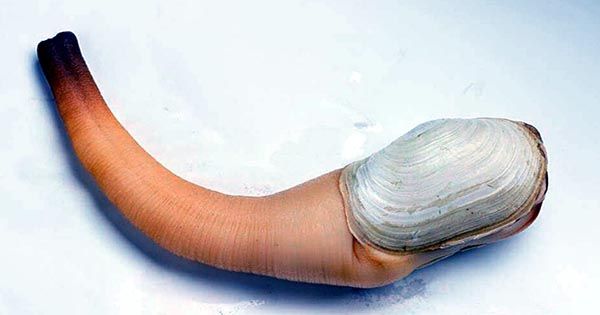In Canada, lots of crops sit in the form of long, zigzag clams under the sand that enter the ocean floor. Geoduck, pronounced as “goo-ey duck” is probably one of the most heinous creations of nature (although logically sex fish still takes the crown) and it is a giant among shellfish. Their shells, which stand to pay attention to about 15 to 20 centimeters (6 to 8 inches) long by about 1 meter (3.3 feet) long, are performed by Geoduck’s huge siphon. Geoduck’s impressive measurements make it the world’s oldest bazaar.
Nestled in the coastal waters of western Canada and northwestern America, Geoducks sits in a family of brackish water called the Hiatellidae. Their name is derived from the word Lushootseed (the language of Nisqually), a part of which translates to “deep digging”, meaning how far down you have to go. All over the world, it is also known as elephant trunk clam, mud duck, and king clam. Collectively, they are a “bag” of Geoducks.
These bivalve mollusks are filter feeders and a very favorite species in British Columbia (BC), Canada, where the locals credit the falcon for gifting their coast with coastal waters. These are a source of revenue in the region, as 1,370 metric tons (3.03 million) of Geoducks are cut for global sales each year, with China and Hong Kong having the largest markets.
Geoducks (Panopea generosa), not the easiest animal to harvest, is usually found at a depth of 1 m below sea level. To collect these, single divers must search for a Geoduck show on the seabed; this is when Geoduck simply throws the tip of his siphon out of the sand. Once located, divers use pressurized water to clear the sand around the clam. A long process for a Geoduck, but the method of harvesting is optimal because there is no buy-catch involved as opposed to trolling.
As long-lived animals, the maximum age has reached over 150 years, although records show that one is 168 years old, they are at risk of excessive phishing and such restrictions limit the geoduck crop to only 2 percent per year BC. You can similarly age any geoduck for tree growth because their shells display annual growth rings.
Geoducks exhibit sexual secrecy and release a staggering 7 to 10 million eggs when the time of mating comes with the females, which the men fertilize by broadcasting their semen. Two days later, the stinging larva emerges from the egg and will swim for a few weeks before taking its position above the sea. Here, they dig using a small foot and begin their teenage life as the world’s largest old bazooka. As adults, they will lose their digging skills and sit still in the sand, stretching and retracting long siphons to feed them.
They even once starred in their own documentary, 3-Foot under Deepening Deep for Geoduck, as you can see above for that trailer. So now that you know what Geoduck is, there is probably a question that…
Geoducks flesh is apparently light and sweet in taste, with a subtle crunchy texture that sets it apart from other clams. So how on earth would you prepare an arm the size of your arm? “Geoducks looks like they might be a challenge to prepare, but they’re relatively easy,” said Cat Lindsay of Geoducks Canada. “Geoducks can be prepared in a variety of ways, but the most common way is to serve raw in thin slices. Remove the geoduck shell and body flesh (any flesh inside the shell) for sashimi-style Geoduck. Geoduck siphon (meat outside the shell) can be mixed in boiling water for 30 seconds and then dipped in ice water. Peel a squash, grate it and cut it in half lengthwise, then thin it out as much as possible. “















